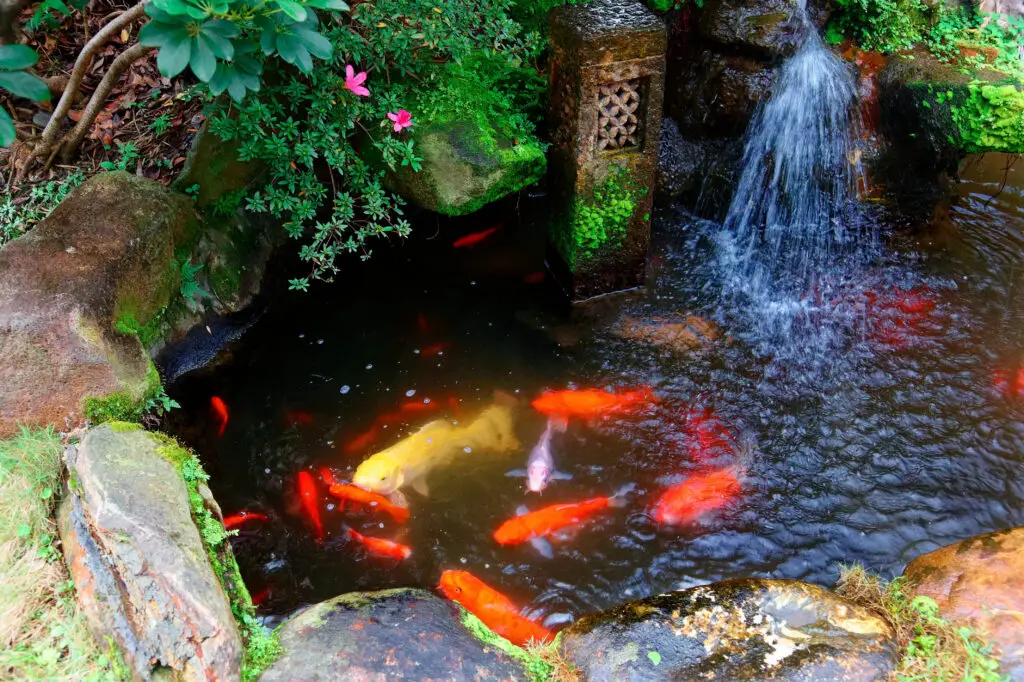
The main job of a pond filter is keeping the water clean and healthy; with this in mind, you might wonder how often you need to repeat a task like filter cleaning. Filters work with a combination of methods to clean the water, and one way is by trapping dirt in the sponge filter. As these filters get clogged up, it becomes more difficult for the filter to process the water.
Filter interiors must be cleaned regularly to prevent the sponge from becoming clogged with dirt. Filters also work on a biological level and should be washed in a way that does not kill the bacteria. Depending on conditions, filters may need to be cleaned more or less often.
Filters in ponds work on two levels; mechanical and biological. We’ll go into depth to discuss how they work and how you should clean them to keep your pond sparkling and healthy. Since how often you need to clean your filter will depend on different factors, we’ll look at all the other elements that will impact your filter cleaning.
Pro Tip: If you’re tired of wasting money and making costly mistakes on the koi-keeping hobby or are thinking about buying koi fish but don’t know where to start, I strongly suggest you check out this ebook. I recently read this ebook, and it contains SO much useful information, such as:
- 3 proven steps to identify koi fish diseases
- WARNING: 3 things you should NEVER do when it comes to caring for koi
- When to seek professional help when it comes to looking after your koi
How Often Should I Clean My Pond’s Filter?
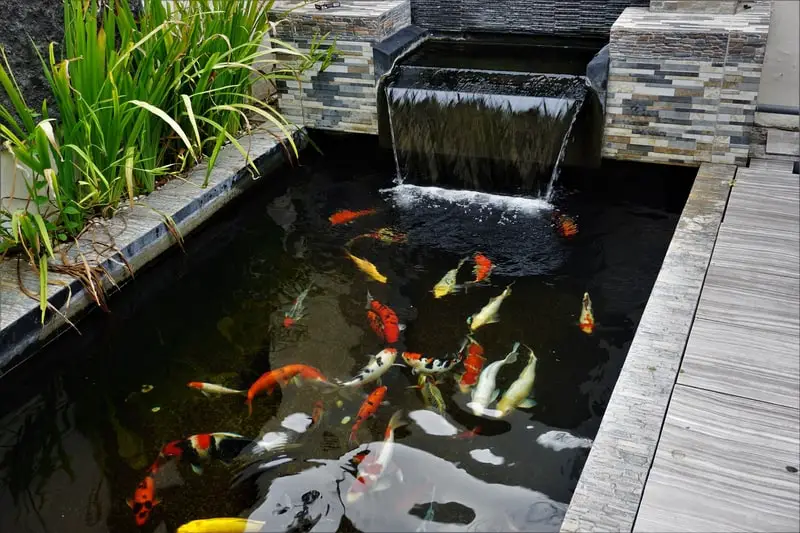
How often you clean your pond filter will depend on several things. The type and power of your filter will play a big part, as a smaller filter may not be powerful enough and unable to cope with the needs of a large, fully-stocked pond.
Weather and external elements matter – high heat may encourage bacteria or algae growth, putting your filter under more strain. The same goes for windy conditions that blow extra dirt and dust into the water.
From a biological perspective, the more fish and invertebrates live in your pond, the more mess they’ll produce. The sponge in a pond filter on a stocked pond in high summer may have to be rinsed out daily to prevent it from becoming too clogged to do a good job.
To keep your filter processing clean, well-oxygenated water that keeps your pond and fish in the best health, you have to ensure that the sponge can do its job, and this may mean daily cleaning in some cases. Of course, another option is to invest in more expensive multi-chamber self-cleaning filters.
Cleaning Biological and Mechanical Pond Filters
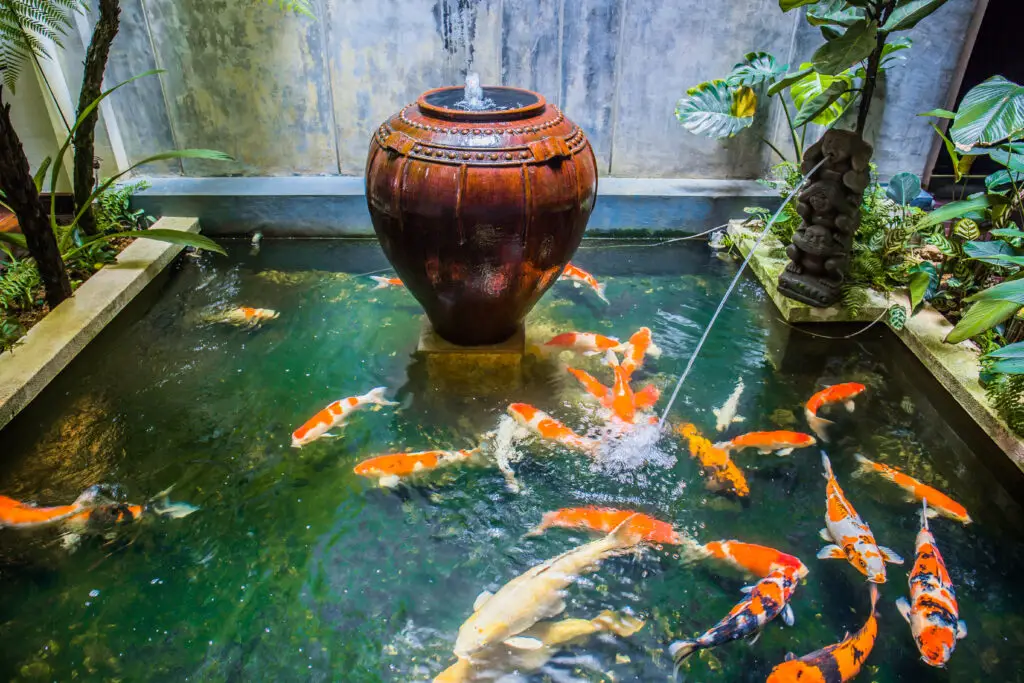
The majority of pond filters use two processes to clean your pond water. The first is a basic mechanical system where the sponges inside the filter trap dirt and muck. As more and more substances build up in the sponges, less water can pass through easily, and the filtration ability drops.
But it’s not this process alone that keeps your pond water healthy for your fish and plants. The most crucial aspect is biological. In every pond filter, bacterial colonies grow in certain parts of the filter – this may be in the sponges in simple systems. In contrast, many modern filtration systems have bio balls and lava rock inside to provide surface area for the bacteria. These colonies do the invisible work of processing chemicals and fish waste that would build up and becomes toxic. Bacteria are an essential part of the nitrogen cycle in your pond.
These bacteria are so crucial that disturbing them can have a detrimental effect on your pond. Cleaning the filter sponge, bio balls, or lava rock too much will negatively impact your filter’s bacterial colony.
It’s also why it is recommended that you only rinse your filters with pond water and never clean them in water treated with chemicals like bleach and chlorine, such as tap water. Most guides recommend cleaning the biological part of the filter about three times a year (or more often if they get filthy, which shouldn’t happen.)
When To Clean Pond Filters
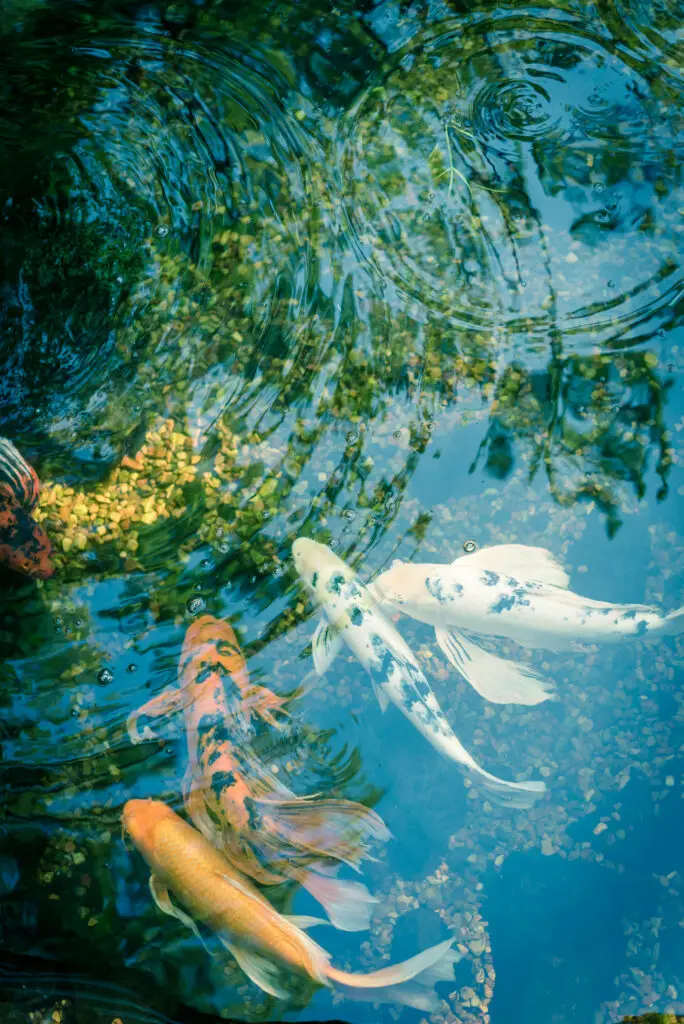
If you find your pond filter is clogging up and becoming filthy very quickly, requiring constant cleaning, it may be time to rethink your filter needs and invest in a new one.
Here are a few signs that it’s probably time for you to invest in a better filtration system for your pond:
- Pond water that is constantly green and/or murky
- You often have a layer of dirt that gathers at the bottom of the pond
- Your fish seem ill or distressed
- The pressure of constantly cleaning your pond filter makes you avoid the task.
It’s usually recommended that biological filtration parts such as bio balls or mats get cleaned three times a year, often at the same time that you perform your major pond maintenance and cleaning.
A complete pond cleanout is usually performed in the spring. During this period, excess pond sludge is removed, plants are replanted or replaced, and around 50% of the pond water is replaced and topped up.
Later smaller maintenance periods are usually taken out in the fall and winter; these three are the optimum times to clean your filters.
Cleaning Pond Skimmers
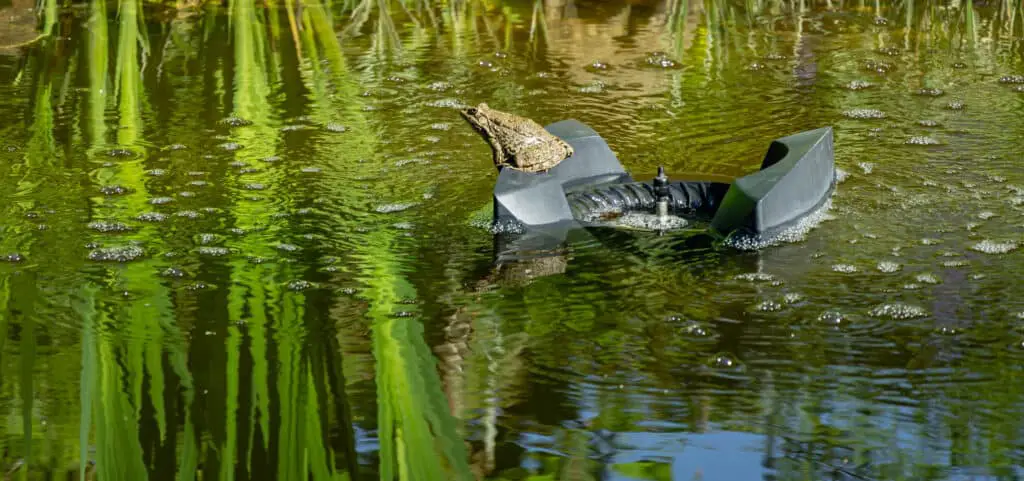
The mechanical filtration of your pond can be improved by using a pond skimmer to remove larger items of waste like fallen leaves and pond algae build-up. Although algae is a natural result of suitable growth conditions, it can look unsightly, and you may want to remove it. One way of naturally getting rid of algae is by planting a good variety of pond plants that will compete with algae for available sun and nutrients.
Leaf skimmers can generally be cleaned reasonably regularly without worry. Since they are not part of the biological system, cleaning them will not disturb the bacteria. Keeping the skimmers clean prevents more extensive waste from entering the filtration system. Check the skimmers every day or every two days to see if they need cleaning – more often if the weather has been blowing down extra leaves and dust.
How To Clean Pond Filter Pads

When you notice the filter flow dropping, this is generally a sign you need to clean out the sponges, as it indicates they have become blocked with debris. Filter pads/sponges, when new, are often white, and you can easily see when you open up your filter that the pads have become clogged. They will have become a black/brown color and clogged with slime and dirt.
You can remove the filter pads and spray them clean with a hose. Although the filter pads support some bacteria, they are usually the mechanical filtration part of your filter. By clearing them of debris and dirt, you will improve their ability to filter your pond water. Depending on the make of filter you’re using, you may have two kinds of filter pads – fine and coarse. The coarse pad provides surface area for bacteria, while the finer one will catch the dirt and sediment.
When cleaning filter pads or sponges, one helpful tip is to knock them against a solid object like a tree trunk to shake loose impacted dirt and sludge.
When To Replace Pond Filter Pads
While cleaning your filter pads is essential, even with regular cleaning, you will not remove all the dirt that sits deep in the filter material. As the debris builds up, the filter will become less efficient. As they age, the filters are more likely to rip or tear. Filters that have been left to become heavily caked may need to be replaced sooner, as even with cleaning, you may be unable to remove the deep caked-in dirt.
while the denser fine filters provide mechanical filtration.
How To Activate Biological Filter Pads
While mats and sponges are meant to capture dirt, they also serve a multipurpose function in providing surface area for bacteria colonies. The coarser the medium, the better they are at giving space for bacteria to thrive. Replacing biological filters will mean your bacterial level can take a knock.
As such, when it comes time to replace your filters completely, consider buying a seeding gel to kickstart your bacterial colonies.
A product like Microbe-Lift comes in handy here and is easy to apply to your new filter mats.
By applying this gel, you stabilize your pond bacteria faster, keeping the nitrogen cycle going. If you have to replace your filters often, we suggest using this to avoid water quality dropping after new filters or a substantial water change.
How To Clean Pond Filter Bio Balls
Some filters also use bio balls as part of their biological filtration system. Bio balls are usually plastic balls with a multi-level surface, sometimes with a foam pad inside, designed to support bacterial growth. Essentially, they are filtration objects that provide as much surface area as possible for the bacteria to grow. Doing so, you help create an environment where ammonia is converted into nitrites, and then nitrite is converted to nitrate to create a healthy nitrogen cycle.
Some filters don’t use bio balls but ceramic rings, which can support more species of bacteria. You can use a combination of both bio balls and ceramic rings. The same idea goes for using lava rock.
Ceramic rings can become more clogged due to the tiny holes on their porous surface. They work best with more robust mechanical filters to help prevent too much dirt from reaching the biological filter systems. Bio balls and ceramic rings should be placed after the mechanical filtering system to keep them as clean as possible.
Since you do not want to disturb your pond’s nitrogen cycle, we suggest you only clean 25% of your bio balls/ceramic rings with each maintenance cycle. Cleaning them is necessary because, like the filter pads, they can become clogged with sludge and dirt. Swish them through a container of pond water to remove built-up dirt, and don’t scrub them or use chemicals such as chlorine or treated tap water.
When To Replace Pond Filter Bio Balls
Plastic bio balls for your pond filter shouldn’t decay or break and rarely need replacing. Usually, a good clean will be enough to remove the excess dirt. Manufacturers often say that bio balls and ceramic rings can last a lifetime, while others suggest swapping them out for new ones after a year.
However, ceramic rings and lava rock may suffer some damage over time. If your rock or rings have been worn down and seem less effective even after cleaning, you may want to replace them.
If you decide to replace your bio balls or rings, only replace a few bio balls at a time so that you don’t break down the biological filtration system and cause an ammonia spike. The changes in ammonia and nitrogen could kill your fish if you don’t manage the levels correctly.
How Often To Clean Pond Sludge
A build-up of pond sludge at the bottom is detrimental to your pond. It creates a toxic environment for your fish and overloads your filter system. This decomposing matter can result in your pond filter getting blocked. There are ways to remove pond sludge, but it is a considerable task, best done at the yearly maintenance clean.
A pond vacuum can be helpful here if sludge is causing a problem for your fish and filters.
The best way to ensure that too much sediment doesn’t build up at the bottom of your pond is to keep skimmers and filters clear and clean. Avoid vacuuming in summer when pond life is reproducing – instead, vacuum in early spring or late fall.
Avoid overstocking your pond; if you have too many fish or are overfeeding them, these can add to high levels of extra waste.
Conclusion
Pond filters have different elements that require cleaning at other times. Leaf skimmers should be cleaned out regularly, and both biological and mechanical filtration pads should be thoroughly cleaned at least three times a year or more if the filtration levels drop. Biological filters such as coarse pads, bio balls, and ceramic rings should only be cleaned in pond water and never scrubbed or chemically treated to avoid destroying the bacteria colonies.
References:
https://www.fishkeepingworld.com/koi-pond/https://www.youtube.com/watch?v=UdUFFjk1yeI

